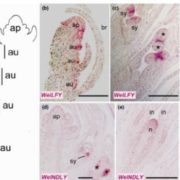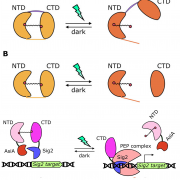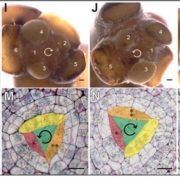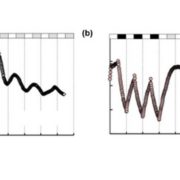Synthetic genetic circuits as a means of reprogramming plant roots (Science)
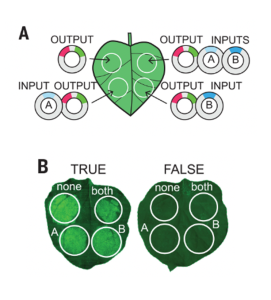 Synthetic genetic circuits offer a promising method to achieve beneficial changes in plant phenotypic traits. By combining different activator or repressor transcription factors (TFs) , the expression of target genes may be fine-tuned according to Boolean operations. Here, Brophy et al. describe a method to design and test synthetic gene circuits, and show how they can be used to modify root development in Arabidopsis thaliana. The group first designed a collection of synthetic TFs, consisting of bacterial DNA binding regions and plant promotors. They then transfected these TFs into leaves of Nicotiana benthamiana, where they were used to drive expression of green fluorescent protein, allowing rapid validation and tuning of circuit performance. Next, the researchers tested the ability of the circuits to induce tissue specific gene expression in Arabidopsis roots. Half of the tested logic gates required further tuning to achieve the expected expression patterns, demonstrating the difficulty in transferring such circuits across organisms and tissue types. Finally the group used the circuits to control expression of the mutant gene solitary root. By restricting expression of the gene circuits to lateral root stem cells, the researchers were able to selectively alter lateral root density in Arabidopsis. This ground-breaking work paves the way for further efforts to precisely modify elements of plant architecture using synthetic biology. (Summary by Rory Burke @rorby95) Science 10.1126/science.abo4326
Synthetic genetic circuits offer a promising method to achieve beneficial changes in plant phenotypic traits. By combining different activator or repressor transcription factors (TFs) , the expression of target genes may be fine-tuned according to Boolean operations. Here, Brophy et al. describe a method to design and test synthetic gene circuits, and show how they can be used to modify root development in Arabidopsis thaliana. The group first designed a collection of synthetic TFs, consisting of bacterial DNA binding regions and plant promotors. They then transfected these TFs into leaves of Nicotiana benthamiana, where they were used to drive expression of green fluorescent protein, allowing rapid validation and tuning of circuit performance. Next, the researchers tested the ability of the circuits to induce tissue specific gene expression in Arabidopsis roots. Half of the tested logic gates required further tuning to achieve the expected expression patterns, demonstrating the difficulty in transferring such circuits across organisms and tissue types. Finally the group used the circuits to control expression of the mutant gene solitary root. By restricting expression of the gene circuits to lateral root stem cells, the researchers were able to selectively alter lateral root density in Arabidopsis. This ground-breaking work paves the way for further efforts to precisely modify elements of plant architecture using synthetic biology. (Summary by Rory Burke @rorby95) Science 10.1126/science.abo4326


